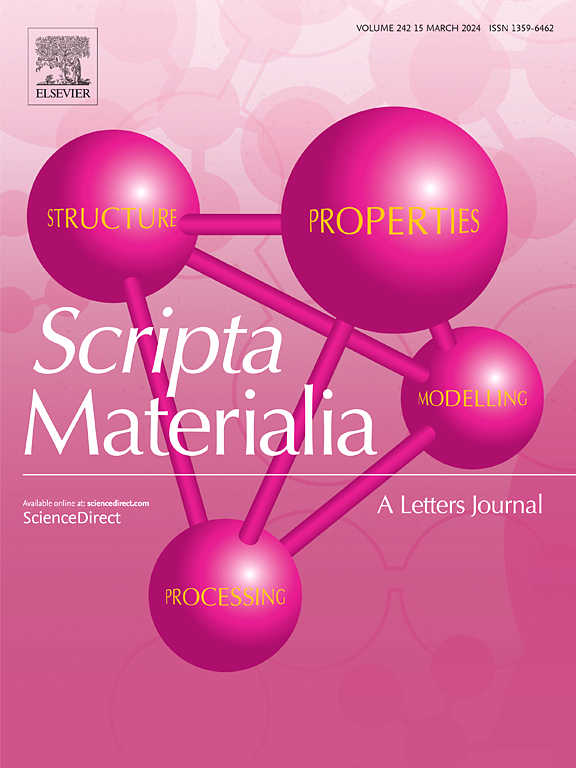Reactive synthesis and ultrafast sintering of refractory compositionally complex alloy-carbide composites
IF 5.3
2区 材料科学
Q2 MATERIALS SCIENCE, MULTIDISCIPLINARY
引用次数: 0
Abstract
Refractory compositionally complex alloy (RCCA) NbMoTaW with a well-dispersed compositionally complex carbide (CCC) reinforcing secondary phase is made through high-energy ball milling (HEBM) and ultrafast high-temperature sintering (UHS). Stearic acid is used as a process control agent (PCA) for HEBM and a carbon source to form a controllable fraction (∼2–20 vol%) of CCC in-situ via reactive synthesis. Ultrahigh heating rates of ∼100 °C/s enable sintering of dense (∼92–95 % relative densities) bulk compacts of RCCA-CCC composites at ∼1850 °C in ∼70 s. With the addition of 0.1–0.75 wt% PCA, ultrafast sintering enables the formation of a favorable Pm1 subcarbide CCC phase, (Nb0.37Mo0.11Ta0.39W0.13)2C. A thermodynamic model is developed to explain the observed Nb and Ta enrichments in (Nb0.37Mo0.11Ta0.39W0.13)2C. An additional rock-salt monocarbide CCC phase forms with more carbon source addition (1 wt% PCA). The well-dispersed and fine-grained CCC precipitates result in grain size refinement and a corresponding increase in hardness.

难熔复合合金-碳化物复合材料的反应合成与超快烧结
采用高能球磨(HEBM)和超快高温烧结(UHS)法制备了具有分散良好的复合碳化物(CCC)增强次级相的难熔复合合金(RCCA) NbMoTaW。硬脂酸被用作HEBM的过程控制剂(PCA)和碳源,通过反应合成原位形成可控分数(~ 2-20 vol%)的CCC。~ 100°C/s的超高加热速率能够在~ 1850°C下在~ 70 s内烧结致密(相对密度~ 92 - 95%)的RCCA-CCC复合材料体坯。添加0.1-0.75 wt% PCA后,超快烧结能形成有利的P3¯m1亚碳化物CCC相(Nb0.37Mo0.11Ta0.39W0.13)2C。建立了一个热力学模型来解释(Nb0.37Mo0.11Ta0.39W0.13)2C中观察到的Nb和Ta富集。添加更多的碳源(1 wt% PCA),形成额外的岩盐单碳化物CCC相。分散良好、细粒化的CCC相使晶粒细化,硬度相应提高。
本文章由计算机程序翻译,如有差异,请以英文原文为准。
求助全文
约1分钟内获得全文
求助全文
来源期刊

Scripta Materialia
工程技术-材料科学:综合
CiteScore
11.40
自引率
5.00%
发文量
581
审稿时长
34 days
期刊介绍:
Scripta Materialia is a LETTERS journal of Acta Materialia, providing a forum for the rapid publication of short communications on the relationship between the structure and the properties of inorganic materials. The emphasis is on originality rather than incremental research. Short reports on the development of materials with novel or substantially improved properties are also welcomed. Emphasis is on either the functional or mechanical behavior of metals, ceramics and semiconductors at all length scales.
 求助内容:
求助内容: 应助结果提醒方式:
应助结果提醒方式:


